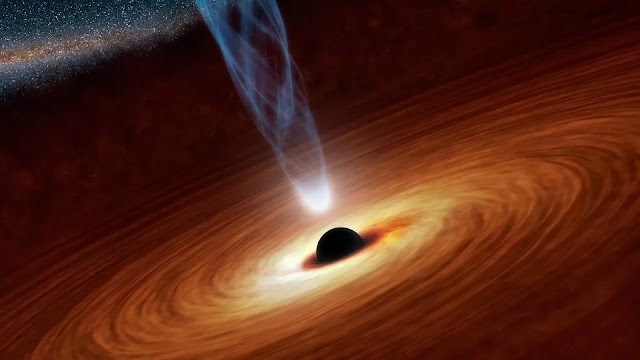For the first time, astronomers have obtained polarimetric images at the event horizon scale of the black hole at the center of our Milky Way galaxy. This remarkable achievement provides a never-before-seen view of Sagittarius A* (or Sgr A*), the immense supermassive black hole that resides at the core of our galactic home.
The striking image reveals the strong magnetic field that surrounds Sagittarius A*. These magnetic fields twist and turn like a spiral, creating a mesmerizing pattern. The research, conducted by an international team of astronomers known as the Event Horizon Telescope (EHT) Collaboration, sheds light on the structural similarities between Sagittarius A* and the supermassive black hole at the heart of the galaxy M87.
The black hole in M87, which was famously imaged for the first time, is more than 1,000 times larger than Sagittarius A*. Despite this size difference, both black holes exhibit powerful and organized magnetic fields. This intriguing similarity suggests that the observed pattern may be common to many or all black holes.
According to Sara Issaoun, a co-leader of the research and an Einstein fellow in the NASA Hubble Fellowship Program, strong and ordered magnetic fields play a critical role in how black holes interact with the surrounding gas and matter. These magnetic fields can influence the behavior of black holes, including the launch of powerful jets of particles into space.
The same research collaboration that captured the first direct visual evidence of Sagittarius A* in 2022 has now provided this groundbreaking view of its magnetic fields. The team also studied the distant galaxy M87, located approximately 53 million light-years from Earth. In M87, the magnetic field surrounding the supermassive black hole, known as M87*, plays a key role in driving the dramatic behavior observed there.
While Sagittarius A* has not yet displayed the same outburst of activity as M87*, the similarities between the two black holes raise intriguing possibilities. Could a hidden jet emerge from Sagittarius A* as well? The answer remains a tantalizing mystery, waiting to be unraveled by future observations and discoveries.
In summary, this incredible first view of the magnetic fields around our galaxy’s supermassive black hole opens up new avenues for understanding the complex interplay between gravity, magnetism, and the enigmatic phenomena occurring at the heart of our cosmic neighborhood.
Reference: The Astrophysical Journal Letters

